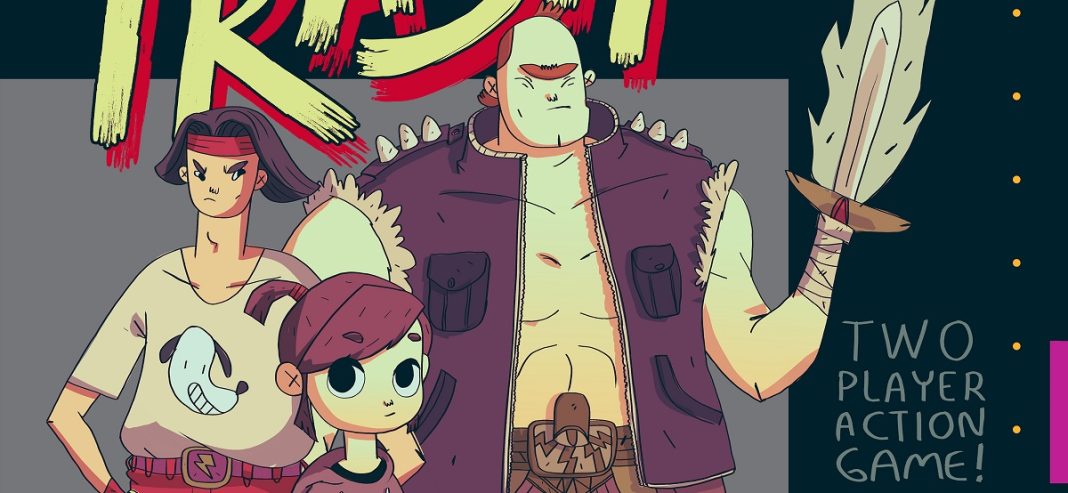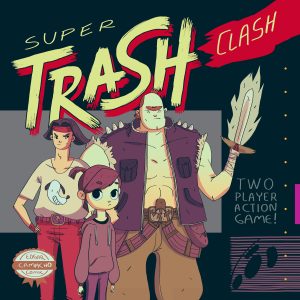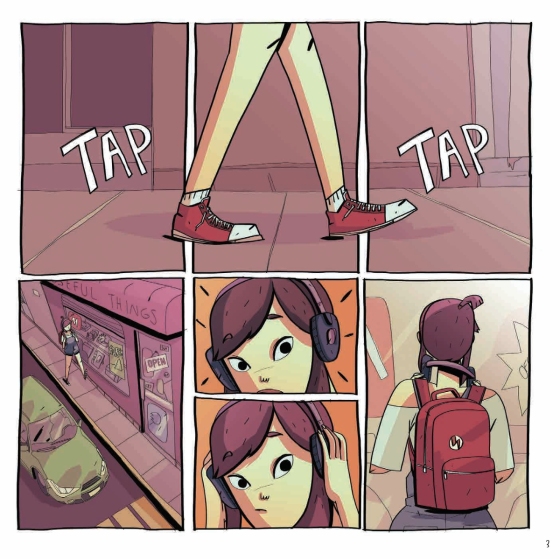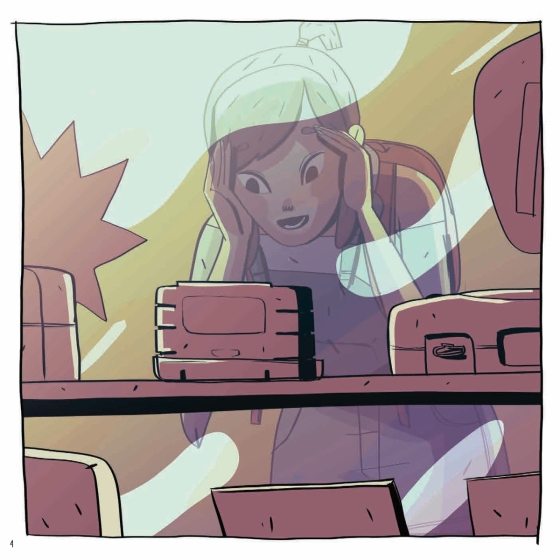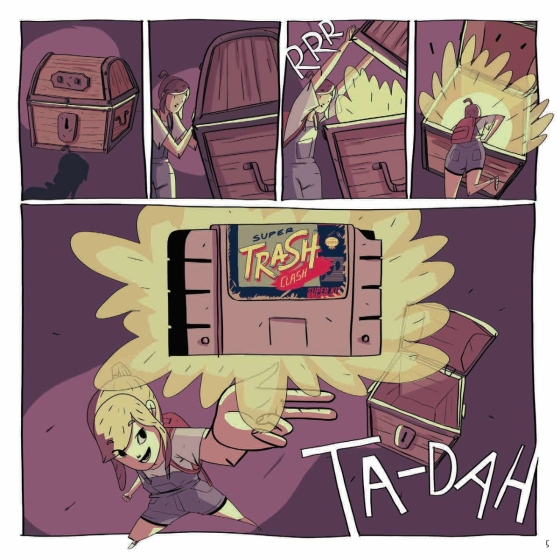 Super Trash Clash
Super Trash Clash
Creator: Edgar Camacho
Translation: Eva Ibarzabal
Publisher: IDW Publishing – Top Shelf Productions
Publication Date: November 2022
Super Trash Clash tells the story of Dul, a young woman who recollects childhood misadventures around a videogame after she encounters it in a shop window.
The heart of the story is Dul’s relationship with her mother and Dul’s realization that her mother’s surprise birthday gift — of the game Super Trash Clash — is a gesture that means more to her than the quality of the game itself. This moment of self-realization, and the other moments like it in the book, are cartoonist Edgar Camacho’s strength.
Over the course of the book Dul learns to value the sacrifices of her mother and honours the generosity she receives. Dul’s growing awareness and the development of her sense of care for her mother are the most nuanced offerings of the book and it’s unfortunate then, this depth of character isn’t as well achieved elsewhere. Dul’s mother, for instance, seems a little too tired as she scolds Dul for playing video games, a somewhat generic statement for a parent to make of their child. Misa too, as well as the other characters, receives little in the way of an actual inner life, and as becomes clear when reading, the book is populated mostly by talking heads who appear to further the story and then vanish with little emotional consequence.
Dialogue is strangely wooden throughout, which may be an issue with the translation to English, but Dul’s speech, in particular, seems a little wooden for its lack of contractions. Talking to Misa Dul says ‘I told my mom I would go home right after school’ which seems an oddly formal sense of expression for a child when chatting with their friend about playing computer games after school. This, coupled with Camacho’s habit of telling rather than showing, gives certain portions of the book a stilted quality. Camacho has characters speak aloud their intentions, summarize their actions, and provide expository dialogue. Waking from a dream, Dul reiterates the imperative of her dark mirror self, which says “You have to get it back!” effectively stating an intention that will motivate her actions for the rest of the book. Further along, Misa tells Dul, ‘We are in enemy territory.’ and continues ‘The other school dominates this arcade.’
Pronouncements compromise any sense of jeopardy and in the case of the latter, are so generic as to feel wholly perfunctory. Perhaps an opportunity to add colour to the social milieu of Mila and Dul’s adolescent world, Camacho skims the potential here for creating anything more than moving the pieces of the story forward and this habit makes Super Trash Clash a little too superficial to possess much depth of feeling. Entering the arcade Dul and Misa are confronted by an antagonist whose main characterizations are feigned ambivalence and a gaggle of brainless lackies, both cliché. These moments have little of the verve or animating energy that the best of comics has to offer.
There are, however, moments of visuals flare and ingenuity. In one effecting sequence, the emotional fallout of Dul learning her mother is paying for Super Trash Clash in installments is captured by Dul falling to the ground, the background fading to black, and the words GAME OVER appearing under her spot lit body. Moments like these energize what is otherwise a very recognizable story with novel storytelling. One has the feeling Camacho was a video game player in his youth and at times, in the excitement of the opening for instance, bottles the lightning of what those moments felt like, of having a hobby or passion, and how consuming they are at that age, something probably easily recognizable to any dedicated comics reader.
Overall Camacho seems a little bound by the nine panel form of the book and in a few unfortunate instances it feels as though commitment to the format takes precedent over the emotional impact of the story or any possible novel or original story telling. The first instance of Dul and Misa playing Super Trash Clash, the panels take the form of a side-scrolling platformer, but later, when playing a two-person combat game, Camacho fails to bring the same brio to proceedings. Cutting from the characters on screen to the buttons of the consoles, feels a little too much like a montage, and squanders potential impact of the scene. All of which is made the more disappointing given the impact that Camacho is capable of and achieves earlier in the book.
Not without its moments of emotion and entertainment, Super Trash Clash at times fees like an unfortunately superficial rendering of an evocative nostalgia that will perhaps be of interest to video game aficionados.
Read more graphic novel reviews at The Beat!
Correction: Eva Ibarzabal did the translation of this book. The post has been edited to reflect that.


